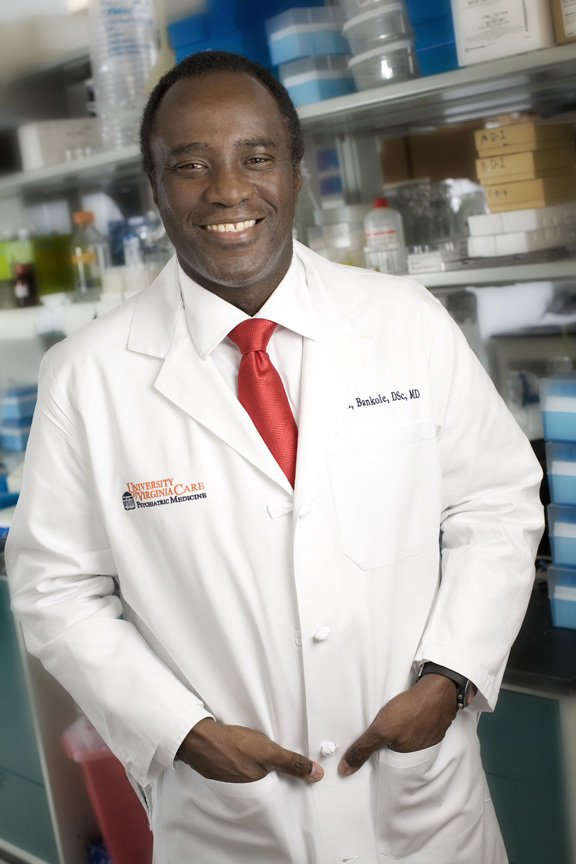The University of Virginia Patent Foundation is celebrating its 30th year of dedicated service to the University's faculty, staff and student inventors. In that time, the Patent Foundation has generated more than $36.6 million in revenue for the University and distributed an additional $18.4 million to University inventors and their collaborators
All this week on UVA Today, we will be running profiles of University inventors who were honored by the Patent Foundation this past year. (Dec. 15, 2008)
Bankole Johnson, M.D., Ph.D., D.Sc.
Psychiatric Medicine
When Dr. Bankole Johnson first presented his ideas for a drug to cure alcoholism two decades ago — ideas that involved a major shift in the way scientists thought about the brain and its neurotransmitters — he was laughed right out of the lecture hall.
“Most people assume addiction has to do with moral willpower,” said Johnson, Alumni Professor and chairman of the U.Va. Department of Psychiatry and Neurobehavioral Sciences. “However, there is a biological component of alcoholism — just as there is with diabetes or high blood pressure. Alcoholism is a disease of the brain.”
While Johnson said this idea has gained a lot of traction over the past 20 years as the body of research on addiction has become increasingly extensive, he describes his initial breakthrough research as a series of “leaps of faith.”
A neuropharmacologist and basic scientist by training, Johnson had studied the pharmacological effects of alcohol, but a simple observation during his time at the University of Oxford is what led him to press the matter further: Why, when it takes 20 to 30 minutes for alcohol to have a viable effect on the body, do some people seem to get a “buzz” even before their first sip? This question ultimately led Johnson to determine that, counter to then-existing theory, the brain’s serotonin-3 receptor had to be responsible for such rapid signaling of the effect.
Having determined the nature of the relationship between addiction and the brain’s neurotransmitters, Johnson set out to test a drug that would serve, in effect, as an “antidote” to the alcoholism disease.
Currently in phase 2 clinical testing, one of his inventive treatments combines existing drugs topiramate, typically used to treat seizures and migraine headaches, and ondansetron, used to treat chemotherapy-induced nausea and vomiting. By testing these drugs alone and in combination, Johnson is seeking to target the treatments to alcoholics with certain types of genetic polymorphisms, present in approximately 30 percent to 65 percent of all alcoholics. The targeted treatments could herald a new vista for individualized drug treatment for alcoholism.
“With these drugs, we hope to take alcoholism from an often hopeless disease to a disease people often recover from,” he said.
The U.Va. Patent Foundation has filed patent applications within the United States and worldwide on Johnson’s innovative drug treatments. And in an effort to move these technologies to the marketplace, Johnson and his collaborators have created a biotechnology start-up company, ADial™ Pharmaceuticals.
To Johnson, invention and discovery play a key role in his career as a physician and researcher. “What else is there, if there’s no thrill in discovery?” he said. “Knowing something for the first time is a thrill on its own, and as a physician scientist, finding something that relieves the suffering of humankind is the greatest reward I can think of.”
As for his critics, Johnson noted, “They don’t laugh anymore.”
Media Contact
Article Information
December 15, 2008
/content/inventor-profile-signaling-decline-alcoholism

